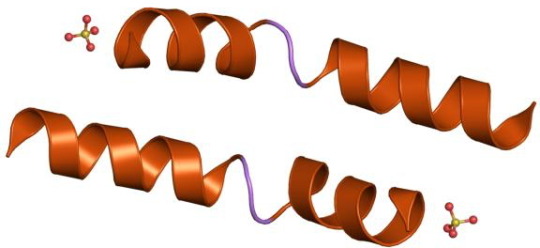#melittin
Text
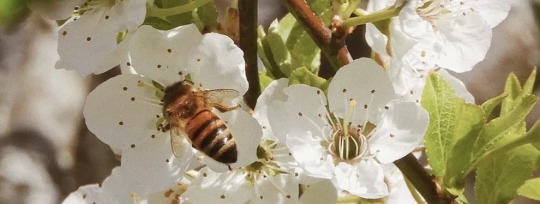
beekeeper of my heart
spencer reid x fem!reader (meeting)
synopsis: spencer makes a visit to an expert
word count: 1.2k
warnings: cussing
masterlist | requests are open
"and what might you be doing here, agent... reid?"
spencer slowly crosses his arms in front of his chest, as if he's attempting to seem more intimidating than he ever was. he purses his lips as his eyes peer around the front porch of your house, "i'm here regarding information about bees and their poison. i read up on the topic, but my boss wanted me to meet someone who knows more about it. there was a murder just outside of town and the deciding factor was bee venom."
you raise your eyebrows, realizing that words spread quickly in a small town. "ahh, so you've been told of my little bee farm," a soft smile spreads across your face, your shoulder resting against the doorframe.
"yes, the chief says he occasionally buys honey down here. so, the main component of venom responsible for pain in vertebrates is a toxin called melittin," spencer starts explaining what information he needed to know, starting off with facts that he already knows.
a little part of you is impressed of his knowledge of bees. while the other half of you wonders what he possibly needs to know that he couldn't research on the internet. you bite your lip, widening your eyes a little as you wait for the agent to give you some sort of explanation.
spencer uncrosses his arms, instead putting his hands on his hips, "well, there seems to be a therapy called apitherapy. bee venom is used to help with arthritis and such, but it isn't widespread. so, the reason i came here was to ask if you know anything more about it."
"about bee venom therapy? i mean, i know that people use honey for a lot of health purposes. but not venom. especially because it can cause anaphylaxis and different allergic reactions. shoot that up in someone's veins and it could go terrible..." you shake your head, shrugging your shoulders, unsure how you could help the agent at all.
he looks down for a second, scrunching up his face a little. that was certainly not the answer he was looking for. you sigh, remembering a conversation you had with a fellow beekeeper who lived a town over, "i do remember talking to another beekeeper who lives about fifteen minutes out? why don't you come in from the heat and i can explain the rest," you stand back, ushering him in.
"that's only if you want to of course, we can stand outside too," you offer, realizing that you have an arsenal of bees and could very well be a suspect of what seems to be a rather heinous crime.
spencer nods, taking a couple steps into your front room. it's filled with greenery and flowers, including a rug that is in the shape of a leaf. it's bright and clearly an homage to your love of nature and bees. he turns around to see you shutting the screen door, letting the air in.
"so, you can have a seat if you like," you sit down yourself, not evening waiting for him to decide to start talking, "his name was john, uh no, his name was steve johnson. he loved bees, has millions of them probably. it's easy to get different species and stuff over the internet. well, he reached out to me to have my buckfast bees."
he ends up sitting down, leaning forward to hear more about these 'buckfast' bees. it's definitely for his thirst for knowledge, and not the sweet aroma that settles around you. it oddly resembles that of honey.
"well it doesn't have a deadlier sting, but it's a bit more aggressive. and i'm curious, naturally, so i ask why he would want my buckfast bees. i only have one colony and would rather not trade them. he mentions that sometimes he gets bears, total lie by the way," you laugh, the thought of bears where you live? ridiculous.
sure you had a couple of bear sightings, but none ever got close to your farm. and when you did speak to steve before, he had always agreed with you. "we both rarely get bears by our colonies. well, he wanted them to defend the rest of the colonies. after i said no, he said, quote, 'fuck you, i have an africanized colony in line anyway'. so i hung up."
spencer raises his eyebrows for a second, his eyes wide in wondering what any of this could mean. he waits for a second, trying to think of what he could say in response to your comments.
"africanized bees are aggressive, they send signals so more than one sting. sometimes they're even called killer bees. most people don't have them in the united states. so, hopefully that helps you. not saying steve did it, but he's the first person that came to mind..." you finish, wearily giving him a smile.
he returns a smile in your direction, scratching the back of his neck, "yes thank you for all of your help. i'll have my team look into it, in the meantime, for curiosity's sake. could you show me your beehives? we don't have many cases that include things like this."
you nod happily, given the chance to show anyone your beehives, you take it. especially when the person asking isn't from your hometown and is interesting.
"absolutely agent reid, if you follow me out my back door i can give you a look see," you usher him over, walking out of the room and unlocking the back door. before the two of you leave the house, spencer quickly says something.
"spencer, you can call me spencer. i get called agent and doctor way too much," he waves his hand while following you out the back door. much to his surprise you agree with him, mentioning your phd in sciences regarding bees and wasps, "oh so you're a doctor then?"
you shrug, "a doctor feels as though i'm in medical work, but it's still a title i hold. now, doctor spencer, here are my bees."
in front of the two of you sits a row of hives. some are farther away than others, based on species of honey bees. some are flying around the area and landing on flowers that are growing wildly. you look back at a twinge of wonder on spencer's face. it's small but with the sunset's hues it's quite memorable.
"it's amazing, i'm not one for being near insects but it really is amazing to see. thank you," spencer turns around to look at you as well, his eyes resting comfortably on yours.
despite having only met you for fifteen minutes maybe, spencer can't help but feel as if he's known you forever. your voice and the way it carries through the air to feels all too familiar for a woman he's just met. especially over a mysterious case that the bau wouldn't normally pick up.
"it was nice to meet you, granted the circumstances of course, doctor y/n," spencer gives you a sweet smile, unsure of what to say next.
of course he'd like to say something suave. something to convince you to visit him in virginia. “thanks doctor spencer. if you ever wanna extract some honey with me, let me know. i have an extra beekeeper suit.”
and just maybe he didn’t need to be suave, he just needed to be a little sweet.
#spencer reid x reader#spencer reid angst#dr spencer reid#spencer reid#criminal minds fic#criminal minds x reader#criminal minds#criminal minds fanfic
139 notes
·
View notes
Text
The Sting of Life: Bee Venom’s Effectiveness in Treating Cancer
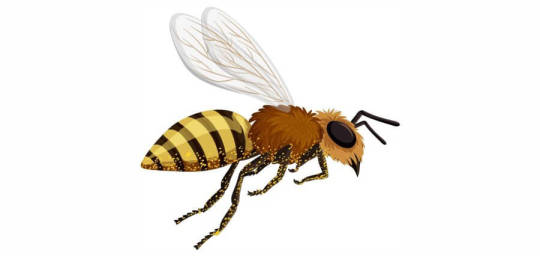
The most promising alternative therapy for treating cancer
Bee venom has emerged as a promising alternative therapy that is effective enough for treating cancer. It has gained significant attention in recent years, with researchers exploring the potential of various natural substances to combat the disease. Several studies have confirmed its effectiveness in treating various types of cancer, including ovarian, prostate, breast, and hepatocellular carcinoma.
In this context, this article will focus on the therapeutic potential of bee venom and its primary component, melittin, in the treatment of cancer, exploring the latest research findings and their implications for cancer therapy.
What is Bee Venom:
Bee venom is a clear, odorless liquid that is produced by honeybees. It is a complex mixture of proteins, enzymes, and other bioactive molecules. When a bee stings, it injects venom into the skin, which can cause pain, swelling, and redness. However, bee venom has also been found to have therapeutic properties and is used in apitherapy to treat a variety of conditions such as arthritis, multiple sclerosis, and chronic pain. It is believed that the anti-inflammatory and pain-relieving effects of bee venom are due to the presence of compounds such as melittin, apamin, and adolapin.
Read More: Click Here
0 notes
Link
Ever thought about asking a member of Parliament how to become Prime Minister? Moira Clay, a leading research strategist, asked that very question, and she's now cultivated a career helping leaders in health and medical research make an impact in both research and the community.
Join us as we speak with Moira about her journey in medical research, and developing a holistic and comprehensive approach to cancer treatment.
About Professor Moira Clay
Professor Moira Clay is one of Australia’s foremost experts in research strategy. She is a transformational leader and a highly experienced facilitator, with an extensive knowledge of the changing research agenda. She has a reputation for professionalism and integrity and is known for her collaborative and inclusive approach. Moira has extensive senior executive experience in research institutes in Victoria, NSW and WA - including 6 months as Acting Director of the Telethon Kids Institute. She was President of two peak bodies – the Australian Society for Medical Research (2003) and Australasian Research Management Society (ARMS) (2013), leading significant public, political and scientific advocacy initiatives. In 2018, she was nominated as a Fellow of ARMS, acknowledging her enduring and substantial contributions to research management, and her active philanthropic involvement was profiled in a TEDx Fremantle talk. In 2011, she completed the Eureka Institute International Certificate in Translational Medicine. She is currently the Chair of the Advisory Board of the Menzies Institute.
Moira founded Moira Clay Consulting in 2013, propelled by her drive to help Australian health and medical research leaders achieve transformative health benefits for the community. MCC has built a strong reputation for adding value to health and medical research organisations (including medical research institute's; hospitals, funding bodies; universities; peak bodies and major initiatives) across Australia.
Website: moiraclayconsulting.com.au
Twitter: @Loscienziato
LinkedIn: https://www.linkedin.com/in/moiraclay/
Watch or listen on your favourite platform.
Show Notes
[00:00:45] Moira's beginnings in biochemistry.
[00:01:51] Developing the foundations for the work Moira does now during her PhD.
[00:03:21] Exploring the world through postdoctoral research.
[00:04:17] Moira's career crisis that led her to think bigger.
[00:05:40] How does one become Prime Minister?
[00:08:32] We ultimately want to make things better.
[00:10:28] Co-design, and how medical research strategy can make an impact.
[00:16:49] A stretched workforce needs greater collaboration.
[00:19:29] The shift to cancer research.
[00:22:25] Starting a consultancy.
[00:23:23] The Pirate Ship Foundation.
[00:24:16] West Australian Comprehensive Cancer Centre: The need for comprehensive cancer care.
[00:30:45] Honeybee Venom Research by Dr Pilar Blancafort and Dr Ciara Duffy.
[00:32:09] West Australian Comprehensive Cancer Centre.
[00:33:56] Exercise for reduction of cancer risk and treatment efficacy.
[00:38:18] What advice you would give someone who wants to do what you do? Or what advice should they ignore?
Topics Topics/Resources/People Mentioned
Dr Ciara Duffy & Dr Pilar Blancafort's Honeybee Venom Research
Duffy, C., Sorolla, A., Wang, E. et al. Honeybee venom and melittin suppress growth factor receptor activation in HER2-enriched and triple-negative breast cancer. npj Precis. Onc. 4, 24 (2020). https://doi.org/10.1038/s41698-020-00129-0
Exercise Medicine Research Institute at Edith Cowan University, Director Professor Rob Newton
WA Comprehensive Cancer Centre
Harry Perkins Institute of Medical Research
Pirate Ship Foundation
Additional Resources
Donate to support cancer research at The Perkins.
Walk for Women's Cancer
Moira's Walk for Women's Cancer Donation Page
Walk for Women's Cancer Donation Page
Follow STEAM Powered
YouTube
Facebook
Instagram
Twitter
Patreon
1 note
·
View note
Text
Could honeybees hold the key to fighting certain types of breast cancer?
A new study conducted in Australia has found that a compound called melittin, found in honeybee venom, could be used in the treatment of hard-to-treat breast cancers such as triple-negative and HER2-enriched. 🔬 While more testing is needed to determine if this treatment will work in humans, researchers found that honeybees worked best with one amount of venom killing cancer without harming other cells in mouse. 🐭 Scientists looked at more than 300 honeybees and bumblebees. While melittin is a natural compound in honeybee venom, it can also be created in a lab. The study was conducted by the Harry Perkins Institute of Medical Research in Western Australia and was published in the peer-reviewed journal Nature Precision Oncology. 📝👨🔬 This exciting development could provide new hope for those affected by breast cancer and further research into the use of bee venom in cancer treatments is ongoing. Click on the link to know more: https://www.wissenresearch.com/technology-research-service/
0 notes
Text
Metal-Phenolic Network-Facilitated "Foe-to-Friend" Conversion of Melittin for Cancer Immunotherapy with Boosted Abscopal Effect
As a naturally occurring cytolytic peptide, melittin (Mel) has strong cytolytic activity and is a potent therapeutic peptide for cancer therapy. However, the serious hemolytic activity of Mel largely impedes its clinical applications. In this work, based on the strong interactions between proteins/peptides and polyphenols, we develop a tannic acid-Fe^(3+) metal-phenolic network (MPN)-based strategy that can convert Mel from foe to friend via shielding its positive charges and reducing its... http://dlvr.it/Sl4bwF
0 notes
Text
Contents
Molecular Biology
Vol. 56, No. 6, 2022
Virus Genome Editing
Editing of Phage Genomes—Recombineering-assisted SpCas9 Modification of Model Coliphages T7, T5, and T3
A. Isaev, A. Andriianov, E. Znobishcheva, E. Zorin, N. Morozova and K. Severinov p. 801 abstract
Antiviral Activity of CRISPR/Cas9 Ribonucleoprotein Complexes on a Hepatitis B Virus Model In Vivo
A. P. Kostyusheva, S. A. Brezgin, N. I. Ponomareva, I. A. Goptar, A. V. Nikiforova, V. I. Gegechkori, V. B. Poluektova, K. A. Turkadze, A. E. Sudina, V. P. Chulanov and D. S. Kostyushev p. 816 abstract
Bacterial Genome Editing
CRISPR Interference in Regulation of Bacterial Gene Expression
N. I. Nadolinskaia and A. V. Goncharenko p. 823 abstract
Genetic Engineering in Mycobacteria
D. K. Armianinova, D. S. Karpov, M. S. Kotliarova and A. V. Goncharenko p. 830 abstract
Repair of Double-Stranded DNA Breaks Generated by CRISPR–Cas9 in Pseudomonas putida KT2440
N. Sharaev, L. Chacon-Machado, O. Musharova, E. Savitskaya and K. Severinov p. 842 abstract
New Genome Editors
Prokaryotic Argonaute Proteins as a Tool for Biotechnology
E. V. Kropocheva, L. A. Lisitskaya, A. A. Agapov, A. A. Musabirov, A. V. Kulbachinskiy and D. M. Esyunina p. 854 abstract
Yeast Genome Editing
A Test System for Assessment of the Activity of Mutant Cas9 Variants in Saccharomyces cerevisiae
D. S. Spasskaya, A. I. Davletshin, V. V. Tutyaeva, K. A. Kulagin, D. G. Garbuz and D. S. Karpov p. 874 abstract
Plant Genome Editing
Genome Editing in Species of the Tribe Triticeae with the CRISPR/Cas System
B. R. Kuluev, E. V. Mikhailova, A. R. Kuluev, A. A. Galimova, E. A. Zaikina and E. K. Khlestkina p. 885 abstract
cis-Prenyltransferases of Marchantia polymorpha: Phylogenetic Analysis and Perspectives for Use as Regulators of Antimicrobial Agent Synthesis
L. R. Valeeva, S. M. Dzhabrailova and M. R. Sharipova p. 902 abstract
Worm Genome Editing
Transgenesis in Worms: Candidates for an Ideal Model
I. S. Sukhikh, M. Yu. Biryukov and A. G. Blinov p. 915 abstract
Mammalian Genome Editing
Genome Editing in Therapy of Genodermatoses
A. V. Ivanenko, N. A. Evtushenko and N. G. Gurskaya p. 921 abstract
The Efficiency of Gene Activation Using CRISPR/dCas9-Based Transactivation Systems Depends on the System Run Time
A. S. Artyuhov, D. A. Dorovskiy, A. V. Sorokina, K. M. Shakirova, E. D. Momotyuk and E. B. Dashinimaev p. 942 abstract
Structural Elements of DNA and RNA Eukaryotic Expression Vectors for In Vitro and In Vivo Genome Editor Delivery
A. A. Zagoskin, M. V. Zakharova and M. O. Nagornykh p. 950 abstract
Reviews
Prospects of Genetically Encoded Flim Indicators for the Quantitative Assessment of Intracellular Parameters
A. V. Mamontova, T. R. Simonyan and A. M. Bogdanov p. 963 abstract
Protein Homeostasis Dysregulation in Pathogenesis of Neurodegenerative Diseases
M. S. Kukharsky, M. W. Everett, O. A. Lytkina, M. A. Raspopova, E. A. Kovrazhkina, R. K. Ovchinnikov, A. I. Antohin and A. A. Moskovtsev p. 967 abstract
The p53 Tumor Suppressor and Copper Metabolism: An Unrevealed but Important Link
S. A. Tsymbal, A. G. Refeld and O. A. Kuchur p. 979 abstract
Genomics. Transcriptomics
Methylation Status of Apoptosis Genes and Intensity of Apoptotic Death of Peripheral Blood Lymphocytes in Persons Chronically Exposed to Radiation
E. A. Blinova, V. S. Nikiforov, A. I. Kotikova, M. A. Yanishevskaya and A. V. Akleyev p. 993 abstract
Genetic and Molecular Characterization of a Dash Cryptochrome Homologous Gene from Antarctic Diatom Phaeodactylum tricornutum ICE-H
M. L. An and J. L. Miao p. 1003 abstract
Cell Molecular Biology
Mechanism of Leakage in Phosphatidylserine-Containing Membranes by Melittin
R. Wang, M.-Y. Shi, B.-B. Ma and J. Sheng p. 1012 abstract
Blood–Brain Barrier Transwell Modeling
A. V. Petrovskaya, E. P. Barykin, A. M. Tverskoi, K. B. Varshavskaya, V. A. Mitkevich, I. Yu. Petrushanko and A. A. Makarov p. 1020 abstract
High Heterogeneity of Virus-Neutralizing and RBD-Binding Activities of COVID-19 Convalescent Sera
E. A. Astakhova, M. G. Byazrova, G. M. Yusubalieva, V. F. Larichev, V. P. Baklaushev and A. V. Filatov p. 1028 abstract
Full and D-BOX-Deficient PTTG1 Isoforms: Effects on Cell Proliferation
D. E. Demin, E. M. Stasevich, M. M. Murashko, E. A. Tkachenko, A. N. Uvarova and A. M. Schwartz p. 1036 abstract
from Valga s health news,gardening,and cooking ,and beauty . https://ift.tt/6CFGXNT
via https://ift.tt/n2QDhgT
0 notes
Text
What Is a Peptide? Definition and Examples
It does so, in part, by stimulating the liver to release insulin-like growth thing-1 (IGF-1). In turn, IGF-1 triggers muscle protein production and muscle increase. It additionally seems to indirectly sell the breakdown of frame fat.
Back in the Eighties, HGH become a extensively popular overall performance-improving drug among numerous recreational and expert athletes, which includes bodybuilders.
However, because of protection issues, regulating our bodies like the International Olympic Committee banned the off-label use of HGH from 1989 onward.
People believe GHSs provide a number of the identical advantages as HGH with fewer side results. This might also explain their popularity as an opportunity to HGH among bodybuilders.
To date, research indicates that GHS increases the discharge of HGH or IGF-1 in human beings. However, few research have investigated whether taking GHS definitely results in full-size adjustments in frame composition, workout performance, or healing.
What’s greater, no research have examined the effect of GHSs on nicely-educated people.
Therefore, extra studies is needed to decide whether GHSs provide any tangible blessings to bodybuilders. For this purpose, scientists presently do now not realize which muscle groups peptides can also affect most, or which exercises they is probably quality acceptable.
Peptide types for bodybuilding
Bodybuilders may be especially inquisitive about peptides called boom hormone secretagogues (GHS).

The maximum famous GHSs humans use for bodybuilding include:
Growth-hormone releasing hormones: consisting of sermorelin, tesamorelin, CJC-1293, and CJC-1295
Ghrelin and compounds mimicking its movements: including lenomorelin, anamorelin, ipamorelin, macimorelin, and tabimorelin
Growth hormone-releasing peptides (GHRPs): along with alexamorelin, GHRP-1, GHRP-2, GHRP-three, GHRP-4, GHRP-five, GHRP-6, and hexarelin
Supplement corporations regularly tout peptides to reinforce muscle boom, sell fat loss, or improve exercising overall performance and restoration.
However, sturdy research does now not lower back a lot of those claims. Very little evidence is available on the effects of peptides in nicely-skilled people like bodybuilders.
Moreover, GHS peptides are currently a banned doping agent in expert sports activities, and little is thought approximately their long-time period safety. Using them can also cause fitness concerns, and they’re currently only accredited to treat a handful of unique scientific conditions.
A peptide is a molecule such as two or greater amino acids related together by means of peptide bonds. The widespread shape of an amino acid is: R-CH(NH2)COOH. Each amino acid is a monomer that bureaucracy a peptide polymer chain with different amino acids while the carboxyl institution (-COOH) of one amino acid reacts with the amino institution (-NH2) of some other amino acid, forming a covalent bond between the amino acid residues and liberating a molecule of water.
Functions
Peptides are biologically and medically crucial molecules. They obviously arise inside organisms, plus lab-synthesized compounds are active whilst delivered into a body. Peptides act as structural additives of cells and tissues, hormones, toxins, antibiotics, and enzymes. Examples of peptides encompass the hormone oxytocin, glutathione (stimulates tissue increase), melittin (honey bee venom), the pancreatic hormone insulin, and glucagon (a hyperglycemic issue).
1 note
·
View note
Text
Bare feet on mottled grass
Quivery walk amidst the air
A bee stung my foot
#bruh#i lost my beerginity#as in bee stings#not beer#im still a beer+gin#like stepping on a needle#but the needle releases melittin and ur whole system goes like whooop whoop 🤪
0 notes
Text
Bal Arısı Zehri Meme Kanseri Hücrelerini Öldürüyor
Bal Arısı Zehri Meme Kanseri Hücrelerini Öldürüyor
Bal Arısı Zehri Meme Kanseri Hücrelerini Öldürüyor
Avustralyalı bilim insanları bal arılarından alınan zehrin laboratuvar ortamında bazı agresif meme kanser hücrelerini yok ettiğini gözlemledi.
Bal Arısı Zehri Meme Kanser Hücrelerini Öldürüyor
Antik çağlardan beri, Çin, Rusya, Mısır ve Yunanistan gibi ülkelerdeki insanlar, bal arısı vücut parçalarını ve zehrini artrit, romatizma ve bir dizi başka…
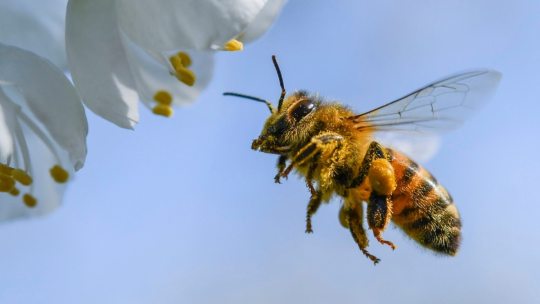
View On WordPress
#Bal arısı zehri#Bilimadamları#breast cancer#cancer#HER2 kanser türü#Honeybee venom#kanser#melittin maddesi#meme kanseri#TNBC hücreleri
0 notes
Text
i learned that a lab study found honeybee venom (which has the compound "melittin") destroyed 2 types of hard to treat breast cancer cells. Melittin on its own reduced cancer cell growth & can be produced synthetically. One venom concentration killed cancer cells within 1 hour with minimal harm to other cells (x)

336 notes
·
View notes
Text
Research papers are here 👆🏽
#cancer#truther#bee#wasp#scorpion#cancersurvivor#cancercure#medicalfield#conspiracy#eatwell#nofrankenfoods#love the earth#healthyhuman
3 notes
·
View notes
Text


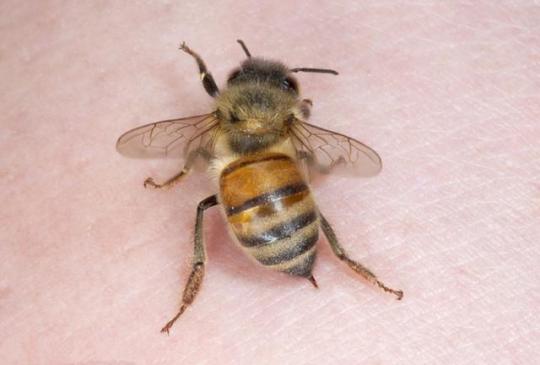
Zap! Stings happen. The allergen in bee venom that causes the main “ouch” is melittin. Such a big molecule. The majority of the time, the symptoms of bee sting serum sickness will improve on their own within 48 hours. #science #KingDraw #dailychem #KDpedia
2 notes
·
View notes
Text
Bee Venom Against Diabetes, Asthma, Cancer and COVID-19?
Bee venom is a biotoxin which can cause severe allergic reactions in some people due to the excessive stress response of the immune system. At the same time, bee venom and its main polypeptide component melttin, are linked, similar to expensive chemotherapeutic agents, to variety of cancer management effects including apoptosis, necrosis, cytotoxicity and mitochondrial disruption, inhibition of angiogenesis, metastasis and invasion of cancer cells, including prostate, breast, lung, liver and bladder.
Bee venom therapy, has also been used in traditional medicine to treat diseases such as arthritis, diabetes, rheumatism, pain, tumors, and skin diseases.

Melittin, is a non-selective cytolytic peptide which binds to negatively charged phospholipid bilayers membrane surfaces and therefore, physically and chemically disrupts all prokaryotic and eukaryotic cell membranes including our red blood cells, hence its biotoxic effect.
New research published by an international team of scientists proposes the use of bee venom as a potential adjuvant against COVID-19. The authors indicate the potential of bee venom to disrupt the protective membrane envelopes or the replication of a wide variety of enveloped and non-enveloped viruses, including Human Immunodeficiency Virus (HIV), Coxsackievirus, Enterovirus, Influenza A Viruses, Human Immunodeficiency Virus (HIV), H1N1, Herpes Simplex Virus (HSV), Junín Virus (JV), Respiratory Syncytial Virus (RSV), Vesicular Stomatitis Virus (VSV) and Tobacco Mosaic Virus (TMV).
The authors point out that bee venom, in low doses and controlled dilute concentrations, triggers a range of anti-inflammatory responses, and have been deployed for management of diabetes, rheumatoid arthritis, heart disease, obesity, asthma, skin diseases, and central nervous system-associated diseases, such as Alzheimer's disease, Parkinson's disease, and sclerosis. At low doses, bee venom can suppress inflammatory cytokines such as interleukin-6 (IL-6), IL-8, interferon-γ (IFN-γ), and tumor necrosis factor-α (TNF-α).

Separately, another research group in India has also suggested the use of micro-dosed melittin-in-surfactant compounds or coconut oil-melittin nanoemulsions as a nasal spray to prevent against ARDS (Acute Respiratory Distress Syndrome) associated with SARS-CoV-2.
Data published in sciencedirect.com indicates that beekeepers living in the epicenter of the SARS-CoV-2 virus did not contract the virus, and neither did a group of patients receiving apitherapy. A total of 5115 beekeepers were surveyed from February 23 to March 8, 2020, including 723 in Wuhan, the outbreak epicentre of Hubei. None of these beekeepers developed symptoms associated with COVID-19, and their health was totally normal.
The co-authors pointed out that “It reminds us the story of the discovery of cowpox and the eventual victory of humans over this disease.”
There is little known about the interactions of bee venom and melittin with SARS-COV-2 infection. In vitro antiviral assay results post melittin-treatments have shown significant decrease in the SARS-CoV-2 viral loads compared to the untreated group. Animal injection studies show melittin wrapped in nanoparticles increases the number of immune cells such as CD8+ T cells, CD4+ T cells, NK cells, and monocytes. In humans, these cells all play an important role in control of SARS-CoV-2 infection.
Other studies show that bee venom can activate T regulatory cells that control runaway inflammation (Cytokine storms).
youtube
One big caveat to the observation in Wuhan is the tolerance developed in those beekeepers to bee stings: “These people have one thing in common: they develop a tolerance to bee sting,” wrote lead author Wei Yang, an oncologist from China and two associates. In other words, bee venom is not immunogenic to certain people who are raised in cohabitation with, or live near bee colonies. For the rest of people who are in big polluted cities and away from feral bee colonies, and therefore, unsure of their reaction to bee venom, I would advise caution.
Related paper:
1 note
·
View note
Text
Contents
Molecular Biology
Vol. 56, No. 6, 2022
Virus Genome Editing
Editing of Phage Genomes—Recombineering-assisted SpCas9 Modification of Model Coliphages T7, T5, and T3
A. Isaev, A. Andriianov, E. Znobishcheva, E. Zorin, N. Morozova and K. Severinov p. 801 abstract
Antiviral Activity of CRISPR/Cas9 Ribonucleoprotein Complexes on a Hepatitis B Virus Model In Vivo
A. P. Kostyusheva, S. A. Brezgin, N. I. Ponomareva, I. A. Goptar, A. V. Nikiforova, V. I. Gegechkori, V. B. Poluektova, K. A. Turkadze, A. E. Sudina, V. P. Chulanov and D. S. Kostyushev p. 816 abstract
Bacterial Genome Editing
CRISPR Interference in Regulation of Bacterial Gene Expression
N. I. Nadolinskaia and A. V. Goncharenko p. 823 abstract
Genetic Engineering in Mycobacteria
D. K. Armianinova, D. S. Karpov, M. S. Kotliarova and A. V. Goncharenko p. 830 abstract
Repair of Double-Stranded DNA Breaks Generated by CRISPR–Cas9 in Pseudomonas putida KT2440
N. Sharaev, L. Chacon-Machado, O. Musharova, E. Savitskaya and K. Severinov p. 842 abstract
New Genome Editors
Prokaryotic Argonaute Proteins as a Tool for Biotechnology
E. V. Kropocheva, L. A. Lisitskaya, A. A. Agapov, A. A. Musabirov, A. V. Kulbachinskiy and D. M. Esyunina p. 854 abstract
Yeast Genome Editing
A Test System for Assessment of the Activity of Mutant Cas9 Variants in Saccharomyces cerevisiae
D. S. Spasskaya, A. I. Davletshin, V. V. Tutyaeva, K. A. Kulagin, D. G. Garbuz and D. S. Karpov p. 874 abstract
Plant Genome Editing
Genome Editing in Species of the Tribe Triticeae with the CRISPR/Cas System
B. R. Kuluev, E. V. Mikhailova, A. R. Kuluev, A. A. Galimova, E. A. Zaikina and E. K. Khlestkina p. 885 abstract
cis-Prenyltransferases of Marchantia polymorpha: Phylogenetic Analysis and Perspectives for Use as Regulators of Antimicrobial Agent Synthesis
L. R. Valeeva, S. M. Dzhabrailova and M. R. Sharipova p. 902 abstract
Worm Genome Editing
Transgenesis in Worms: Candidates for an Ideal Model
I. S. Sukhikh, M. Yu. Biryukov and A. G. Blinov p. 915 abstract
Mammalian Genome Editing
Genome Editing in Therapy of Genodermatoses
A. V. Ivanenko, N. A. Evtushenko and N. G. Gurskaya p. 921 abstract
The Efficiency of Gene Activation Using CRISPR/dCas9-Based Transactivation Systems Depends on the System Run Time
A. S. Artyuhov, D. A. Dorovskiy, A. V. Sorokina, K. M. Shakirova, E. D. Momotyuk and E. B. Dashinimaev p. 942 abstract
Structural Elements of DNA and RNA Eukaryotic Expression Vectors for In Vitro and In Vivo Genome Editor Delivery
A. A. Zagoskin, M. V. Zakharova and M. O. Nagornykh p. 950 abstract
Reviews
Prospects of Genetically Encoded Flim Indicators for the Quantitative Assessment of Intracellular Parameters
A. V. Mamontova, T. R. Simonyan and A. M. Bogdanov p. 963 abstract
Protein Homeostasis Dysregulation in Pathogenesis of Neurodegenerative Diseases
M. S. Kukharsky, M. W. Everett, O. A. Lytkina, M. A. Raspopova, E. A. Kovrazhkina, R. K. Ovchinnikov, A. I. Antohin and A. A. Moskovtsev p. 967 abstract
The p53 Tumor Suppressor and Copper Metabolism: An Unrevealed but Important Link
S. A. Tsymbal, A. G. Refeld and O. A. Kuchur p. 979 abstract
Genomics. Transcriptomics
Methylation Status of Apoptosis Genes and Intensity of Apoptotic Death of Peripheral Blood Lymphocytes in Persons Chronically Exposed to Radiation
E. A. Blinova, V. S. Nikiforov, A. I. Kotikova, M. A. Yanishevskaya and A. V. Akleyev p. 993 abstract
Genetic and Molecular Characterization of a Dash Cryptochrome Homologous Gene from Antarctic Diatom Phaeodactylum tricornutum ICE-H
M. L. An and J. L. Miao p. 1003 abstract
Cell Molecular Biology
Mechanism of Leakage in Phosphatidylserine-Containing Membranes by Melittin
R. Wang, M.-Y. Shi, B.-B. Ma and J. Sheng p. 1012 abstract
Blood–Brain Barrier Transwell Modeling
A. V. Petrovskaya, E. P. Barykin, A. M. Tverskoi, K. B. Varshavskaya, V. A. Mitkevich, I. Yu. Petrushanko and A. A. Makarov p. 1020 abstract
High Heterogeneity of Virus-Neutralizing and RBD-Binding Activities of COVID-19 Convalescent Sera
E. A. Astakhova, M. G. Byazrova, G. M. Yusubalieva, V. F. Larichev, V. P. Baklaushev and A. V. Filatov p. 1028 abstract
Full and D-BOX-Deficient PTTG1 Isoforms: Effects on Cell Proliferation
D. E. Demin, E. M. Stasevich, M. M. Murashko, E. A. Tkachenko, A. N. Uvarova and A. M. Schwartz p. 1036 abstract
from Valga s health news,gardening,and cooking ,and beauty . https://ift.tt/6CFGXNT
via https://ift.tt/n2QDhgT
0 notes
Text
Everything About Carpenter Bee Sting
Carpenter bees are enormous gleaming dark honey bees you can discover floating around your home during spring. As their name recommends, these honey bees are scandalously known for their propensity for boring openings and destroying wooden designs. Despite the fact that they feed on blossoms and nectar-like different honey bees, craftsman honey bees constantly make burrows inside developments for propagation and egg-laying. Albeit innocuous until incited, these fluffy-looking honey bees will in a general sting. Allow us to discover more about them.
1. Do Carpenter bees sting?
Male Carpenter bees can't assault. While the ones with the hot air, the female woodworker honey bees have stingers and can sting when under hurt. Like some other animals, on the off chance that you attempt to smack these honey bees or hurt them in any capacity, they are probably going to assault as a safeguard. Be that as it may, let them be, and they can be similarly innocuous.
2. How to Dispose of the Carpenter bees?
To dispose of carpenter bees a portion of the careful steps you can depend on the incorporation of the wooden designs close to your home to keep away from the pervasion of craftsman honey bees, stopping the openings as of now present with dowel and wood paste, and requesting proficient assistance.
3. Do Craftsman Honey Bee Stings Hurt?
Like some other honey bee, wasp, or hornet sting, even the California carpenter bee sting is venomous and contains melittin. That is liable for the aggravation and consuming vibe that follows a sting. The toxin is known to spread rapidly through your body setting off heat sensors to feel the aggravation.
4. What Occurs After the Carpenter bees Stings?
Since a sting is their final hotel of assurance, a female Carpenter bee bites the dust after the assault. Discussing the sting, the individual who got stung would at first notice serious copying sensation, redness, and enlarging in and around the space. Post the dialing down of the aggravation, a dull throb would follow for the following, not many hours.
5. How Would it be a Good idea for you to Respond Whenever Stung By a Carpenter bee?
Subsequent to getting the proper treatment to bring down the agony, the main thing you ought to do is look for proficient assistance to try not to repeat any scenes. Timetable a meeting with the prepared staff of vermin control administrations and leave your Carpenter bee sting stresses behind.
6. Are Carpenter bees Sting Perilous?
Since stinging prompts demise for them, Carpenter bees sting you just if all else fails to secure themselves. They basically stay away from any association with people and are regional and try not to live in huge populaces together. So a couple of California Carpenter bees boring openings in your patio shouldn't be a significant reason for concern.
7. Carpenter bees Sting Treatment
Freezing in the wake of getting stung by a woodworker honey bee will probably trigger pointless shock for your body. The pointers referenced underneath will assist you with seeing how to treat a woodworker honey bee sting.
Stay Quiet – Eliminate yourself from the space to keep away from another assault in a condition of frenzy.
Eliminate the Stinger – Scratch it off with a bandage and recollect this at the earliest opportunity since the stinger conveys the toxin.
Treat the Region – Wash the region with cold cleanser water to eliminate the overabundance toxin from the skin.
Apply Something Cold – An ice-pack or even a sack of frozen peas will bring down the expansion.
Look for Help for the Aggravation – Get yourself a portion of compelling over-the-counter painkillers like Ibuprofen or acetaminophen.
Check for Any Serious Responses – Don't scratch the region a lot since it could prompt optional responses. Watch out for any inordinate enlarging, breathing trouble, sickness, and unsteadiness.
If your homes in Auburn, Maine are infested with carpenter bees, call “Green Pest Defense” a prominent Auburn Pest Control agency for complete extermination.
1 note
·
View note
